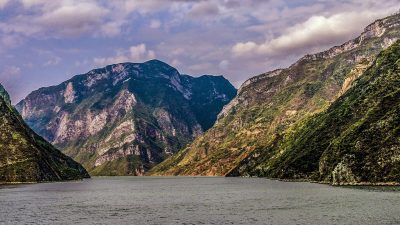Unveiling The Tragic Failures And Lasting Lessons
The 1939 Erzincan Earthquake was one of Turkey’s most devastating natural disasters. On the morning of December 27, 1939, the ground trembled violently, leaving behind a catastrophic loss of life and infrastructure. The earthquake, which measured a staggering 7.9 on the Richter scale, was responsible for the deaths of over 33,000 people and the destruction of much of the Erzincan province. The shockwaves not only affected the city but also left the entire region reeling, with widespread devastation to homes, businesses, and critical infrastructure.
The impact of this earthquake was far-reaching, as it revealed how vulnerable the region was to seismic activity. The city of Erzincan, once a thriving hub, was left in ruins, with thousands of buildings reduced to rubble. The destruction was not just physical; it was also psychological, as the community was forever altered. The earthquake served as a powerful reminder of the unpredictable forces of nature and the need for robust preparedness and response strategies.
The 1939 Erzincan Earthquake: A Disaster Waiting to Happen?
Could the 1939 Erzincan Earthquake have been prevented or at least mitigated? The answer lies in Turkey’s disaster preparedness before the event. While seismic activity was well-documented in the region, local authorities had failed to invest in proper building standards or comprehensive disaster response strategies. In fact, many of the buildings in Erzincan were constructed using substandard materials, making them especially vulnerable to collapse during a major quake.
Turkey, at that time, lacked the infrastructure and knowledge required to deal with such a massive disaster. Had the authorities taken steps to enforce building codes and better prepare for an earthquake of this magnitude, the death toll and destruction could have been significantly reduced. Unfortunately, the lack of preparedness and foresight ultimately led to a tragedy that could have been mitigated with the right precautions.
Surviving the Unthinkable: What We Can Learn from Erzincan’s Destruction
- Building Resilience in Seismic Zones: The Erzincan earthquake highlighted the urgent need for earthquake-resistant buildings. Today, we must ensure that infrastructure in high-risk zones is constructed with materials capable of withstanding seismic activity.
- The Role of Early Warning Systems: While earthquakes cannot be predicted with precision, the implementation of early warning systems could save countless lives. Technologies today can detect tremors before they reach critical thresholds, offering vital seconds for people to evacuate or take cover.
- Community Preparedness and Education: Local communities must be educated on how to respond to an earthquake. During the Erzincan disaster, many lives could have been saved if individuals were better trained in basic survival techniques, such as seeking shelter and creating emergency plans.
- Government and International Cooperation: The government’s failure to respond promptly worsened the impact of the disaster. Today, swift government action and international cooperation are key to reducing the human cost of such tragedies.
- The Psychological Impact of Earthquakes: In the aftermath of Erzincan, survivors faced significant psychological trauma. Mental health support must be a central part of disaster recovery plans, as the emotional scars left by such events can linger for years.
A Deadly Wake-Up Call: How Erzincan Exposed Turkey’s Vulnerability
The 1939 Erzincan Earthquake exposed several vulnerabilities in Turkey’s ability to cope with large-scale disasters. The country’s lack of preparedness and outdated infrastructure meant that, when the earthquake hit, it was a disaster waiting to happen. Much of the destruction was caused by buildings that were not designed to withstand seismic forces. In the aftermath, it became evident that Turkey’s disaster management systems were inadequate, and urgent reforms were needed to address the country’s vulnerability to earthquakes.
In response to the catastrophe, Turkey began to focus on improving its disaster preparedness. The Erzincan tragedy acted as a catalyst for the creation of better building codes, the establishment of new earthquake monitoring systems, and an overall commitment to reducing the risk of future disasters. However, this came too late for those who perished in the 1939 earthquake.
Erzincan’s Earthquake: How Thousands Paid the Price for Poor Planning
The loss of life and destruction in Erzincan could have been mitigated with better planning. Unfortunately, the lack of investment in earthquake-resistant infrastructure led to thousands of deaths. Buildings were poorly constructed, often using materials that were not suitable for the seismic environment. When the earthquake struck, these buildings crumbled under the pressure, leading to the collapse of entire districts.
The delay in emergency response also exacerbated the situation. Aid from the government was slow to arrive, and survivors were left without essential supplies for days. The tragic irony is that, had planning been better, many lives could have been spared, and the city of Erzincan might have been able to recover more quickly.
The Forgotten Earthquake: Why Erzincan’s 1939 Tragedy Should Never Be Overlooked
The Erzincan Earthquake is often overshadowed by more recent disasters, but it remains one of the most devastating events in Turkey’s history. Its significance lies not only in the scale of the destruction but also in the lessons it taught about the importance of preparedness and response. Despite the tragedy, Erzincan’s earthquake faded from the global spotlight, with much of the world unaware of the magnitude of the disaster until decades later.
We must not forget the lessons of Erzincan, as they hold the key to mitigating future disasters. By remembering and learning from this catastrophe, we can prevent similar outcomes in the future, ensuring that the lives lost were not in vain.
The Erzincan Earthquake: Was Turkey’s Fate Sealed by Its Own Neglect?
Turkey’s response to the 1939 earthquake was hampered by a combination of factors, including poor infrastructure, delayed government action, and a lack of resources. The country’s neglect in terms of building regulations and emergency preparedness made the earthquake’s impact far worse than it should have been. Had the government recognised the vulnerability of the region and taken steps to improve building standards and disaster management, many of the lives lost could have been saved.
This neglect raised serious questions about the role of government in disaster prevention and response. Today, nations around the world must learn from Turkey’s mistakes to avoid repeating the same errors and minimise the human cost of future earthquakes.
The Aftershocks of 1939: What We Still Don’t Understand About the Erzincan Earthquake
Despite decades of research into the Erzincan Earthquake, several questions remain unanswered. Scientists are still studying the causes of the tremor and why it caused such catastrophic damage. While much is known about the seismic activity in the region, the exact factors that triggered the quake and why it was so destructive remain shrouded in mystery.
Modern earthquake science has come a long way since 1939, yet the Erzincan Earthquake still holds valuable lessons that continue to influence how we understand seismic events today. Ongoing research into the quake’s causes and effects can help us better prepare for similar events in the future.
Conclusion: The Legacy of the 1939 Erzincan Earthquake and Its Lasting Lessons
The 1939 Erzincan Earthquake left an indelible mark on Turkey’s history, reshaping the country’s approach to disaster management and infrastructure development. The lessons learned from this devastating event paved the way for significant improvements in earthquake preparedness, yet the human cost was immeasurable. The tragedy serves as a stark reminder of the need for vigilance, proper planning, and effective response to natural disasters.
As we reflect on Erzincan’s legacy, it is crucial to recognise the importance of building resilient communities. We must continue to learn from the past, ensuring that the mistakes made in 1939 are not repeated and that future generations are better equipped to face the forces of nature.
5 Short FAQs:
- What caused the Erzincan earthquake in 1939?
- The Erzincan earthquake was caused by tectonic shifts in the Earth’s crust along a fault line in Eastern Turkey, producing a magnitude of 7.9.
- How many people died in the Erzincan earthquake?
- Over 33,000 people died, and the destruction left thousands more injured or displaced in the Erzincan region.
- What were the long-term effects of the 1939 Erzincan earthquake?
- The earthquake triggered significant changes in Turkey’s disaster response systems, leading to improvements in building codes and emergency management.
- What lessons were learned from the Erzincan earthquake?
- Key lessons included the importance of earthquake-resistant buildings, swift government action, and community preparedness to reduce fatalities.
- How did the Turkish government respond to the Erzincan earthquake?
- The response was slow and inadequate, which contributed to the severity of the impact. Aid was delayed, and resources were insufficient in the immediate aftermath.
References:
“1939 Erzincan earthquake”
“What was Turkey’s 1939 Erzincan earthquake?”
“Turkey quake worst since 1939 Erzincan temblor: A look back at…”
“Evidence for surface rupture of the 1939 Erzincan earthquake based…”




